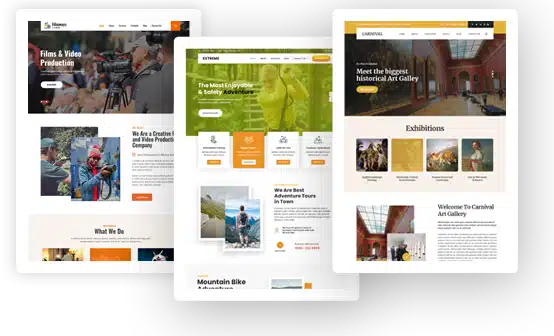From Web Design to Online Discovery: Why WordPress Developers Should Care About White Label SEO

A functional website is no longer enough. In today’s digital economy, if a site can’t be discovered, it may as well not exist. For WordPress developers, design and usability are only part of the equation. The other half is search visibility. And this is precisely where white label SEO becomes an invaluable extension of your service offering.
With over 5.3 billion internet users worldwide as of 2025 (DataReportal), and 68% of all online experiences beginning with a search engine (BrightEdge), visibility is no longer optional—it’s mission-critical.
Design and Discovery Are No Longer Separate
Search engines have evolved beyond keywords and backlinks. Google’s algorithm now evaluates more than 200 ranking factors, which intersect directly with web design and development choices.
- 88% of online users won’t return to a site after a bad experience (Forrester Research)
- 40% abandon a website that takes more than 3 seconds to load (Google)
- Sites that are mobile-friendly see a 67% higher likelihood of converting visitors (Adobe)
These statistics confirm that a WordPress developer’s design choices—from image compression to navigation structure—are instrumental in determining whether a site will rank and convert.
What Is White Label SEO?
White label SEO is a strategic collaboration where an external White Label SEO provider delivers services under your brand name. This model allows WordPress developers and digital agencies to offer expert-level SEO without hiring in-house specialists.
According to Search Engine Journal, nearly 50% of marketing agencies now offer White Label SEO services, and 72% report increased revenue directly.
Services typically included:
- On-page SEO (meta tags, headings, keyword density)
- Technical SEO (site speed, mobile optimization, indexability)
- Off-page SEO (backlinks, citations, digital PR)
- Content strategy and optimization
- Local SEO and Google Business Profile optimization
Why Developers Should Look Beyond Code
Design provides the frame, and the SEO campaign provides the fuel. Many developers build stunning websites, but their clients eventually complain, “We have no traffic.”
Here’s why that happens:
- Without an XML sitemap, Google may not crawl all pages
- Poor URL structures confuse search bots (e.g., /page123 vs. /about-us)
- Lack of alt text or semantic HTML weakens keyword context.
- No structured data = lost opportunities for rich results
61% of marketers say improving SEO and growing organic presence is their top inbound priority (HubSpot). Developers who understand and address this priority become strategic assets, not just service providers.
Where UX and SEO Intersect
Search engines increasingly mimic human behavior. Google’s RankBrain, for example, tracks:
- Click-through rates (CTR)
- Dwell time (time spent on page)
- Bounce rates
- Navigation paths
This means:
- A confusing menu reduces CTR
- Long load times cut dwell time.
- Poor mobile UX raises the bounce rate.
Pages with high UX scores rank 1.6x higher than poorly optimized pages with equivalent backlinks (Backlinko, 2023).
By optimizing for UX, developers naturally optimize for SEO, particularly with mobile responsiveness, intuitive navigation, and fast-loading elements.
Speed, Mobile, and the Technical Side of SEO
In 2021, Google rolled out Core Web Vitals as a ranking signal. According to Web Almanac, in 2024, only 39% of websites globally met all three CWV thresholds.

The three metrics:
- Largest Contentful Paint (LCP) – Ideal: <2.5 seconds
- First Input Delay (FID) – Ideal: <100 ms
- Cumulative Layout Shift (CLS) – Ideal: <0.1
Sites that pass all three see a 24% reduction in bounce rate and higher average rankings. A well-coded WordPress site with lean themes and clean CSS will always outperform bloated page builder themes.
The WordPress Edge in SEO
WordPress is by far the most SEO-capable CMS, if configured correctly.
Key strengths:
- Custom permalinks and slug control
- SEO plugins like Rank Math, SEOPress, and Yoast for rich metadata
- Easy implementation of schema markup
- Multilingual SEO support with plugins like WPML
Yet, 31% of WordPress sites still have duplicate content issues, often caused by category/tag mismanagement or improper URL parameters (Ahrefs, 2024).
Theme and Plugin Choices Affect Search Rankings
The wrong theme can kill SEO reseller service performance.
- Premium themes often include unnecessary features and scripts.
- Many page builders inject 30,000+ lines of code, damaging LCP.
- Plugins like sliders or popups can delay main thread execution.
Switching to a performance-optimized theme like GeneratePress or Astra can improve page speed scores by up to 42% (WP Rocket Benchmark 2024).
Choose plugins that are:
- Actively maintained
- Compatible with caching and CDNs
- Lightweight and modular
Metadata, Schema, and Structural Markup
Structured data increases CTR by up to 30%, enabling rich results like reviews, FAQs, and product listings (Search Engine Land, 2023).
What to implement:
- Meta titles/descriptions: optimized for primary keywords and intent
- Open Graph tags: control how your content appears on social platforms
- JSON-LD schema: for reviews, FAQs, articles, events, and local business
- Canonical tags: prevent duplicate indexing
WordPress plugins like Schema Pro or Rank Math make this implementation seamless—but only if appropriately configured.
SEO Audits as a Value-Add
SEO audits deliver insight and credibility. Most white label SEO service offer:
- Keyword gap analysis
- Content quality audits
- Technical crawl diagnostics
- Competitor benchmarking
- Backlink profile evaluations
According to Clutch, 67% of clients who receive audit insights are more likely to purchase monthly retainers. For developers, offering SEO audits post-launch is a high-impact, low-effort upsell.
A New Revenue Stream for Developers
Here’s how white label SEO increases revenue:
- A $1,500 website can be turned into a $3,000+ project with bundled SEO
- Depending on the scope, ongoing SEO retainers range from $300 to $2,000/month.
- Keyword tracking and reporting justify recurring billing.
SEO clients stay 4.2x longer than design-only clients (HubSpot, 2023). This creates sustainable, compounding monthly income.
Improving Client Retention
Retention is revenue. SEO retains clients because it delivers:
- Ongoing traffic growth
- Regular progress reporting
- Strategic business insights
71% of small business owners say they prefer to work with one agency for all digital needs (Clutch). Offering an SEO reseller program allows you to keep your clients from seeking external providers.
Developers + SEO = Scalable Results

When development, SEO, and marketing services align:
- PageSpeed Insights scores increase by 30–50%
- Keyword rankings rise faster due to a clean site structure.
- Organic traffic increases by 80% on average within 6 months (Moz Industry Data)
White label SEO firm handles outreach, content, and reporting—while you build technically optimized websites ready to scale.
How to Choose a White Label SEO Partner
Evaluate partners based on:
- Turnaround time: Are audits and deliverables timely?
- Transparency: Are reports transparent and data-driven?
- Customization: Can they align with your voice and brand?
- Scalability: Can they grow with your client base?
Look for providers who use industry-standard tools: SEMrush, Ahrefs, Google Search Console, and who offer white-labeled dashboards for reporting.
Elevating Your Role in the Industry
Competition will be fierce in 2025. However, only 18% of WordPress freelancers offer SEO services (WP Engine, 2024). That leaves a massive opportunity for differentiation.
White label service transforms you from:
- Coder → Consultant
- Designer → Growth Partner
- Service provider → Strategic Asset
This positioning lets you raise your rates, retain more clients, and close bigger deals.

